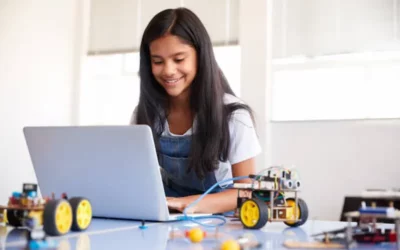In the fast-paced and technology-driven world of 2023, children are growing up in a digital landscape that is constantly evolving. As traditional education methods meet the demands of a rapidly changing society, it has become increasingly important to equip young learners with the skills and knowledge they need to thrive in the modern world. Coding for kids is a great way to introduce them to the world of technology and problem-solving.
Kids coding languages can be a great way to introduce children to the world of computer programming. This is where learning programs for kids come in as an indispensable tool, serving as a must-have resource for parents, educators, and society as a whole.
Table of contents
Introduction
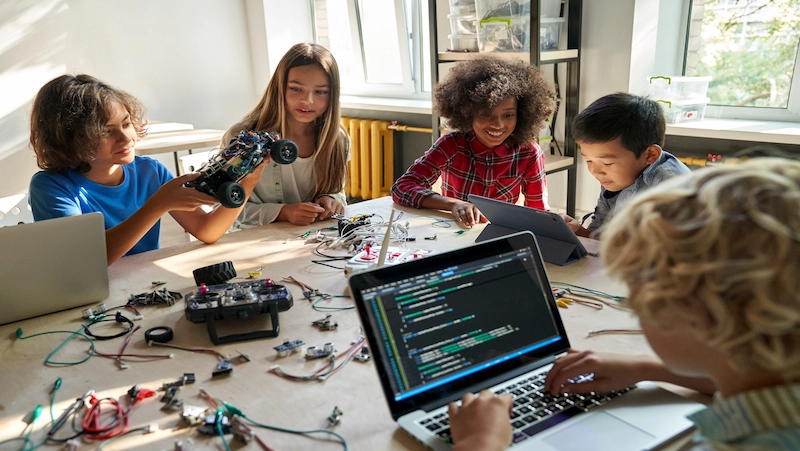
“what is coding for kids” is the first question which pops up. Learning programs for kids have witnessed a remarkable transformation over the years, evolving from simple educational software to comprehensive platforms that encompass a wide range of subjects and interactive experiences.
These programs leverage the power of technology, providing children with engaging and personalized learning opportunities that cater to their individual needs and learning styles.
One of the driving forces behind the necessity of learning programs for kids in 2023 is the digital revolution that has swept across all aspects of our lives. From smartphones and tablets to artificial intelligence and virtual reality, technology has become an integral part of our daily routines.
Children are growing up in a world where digital literacy and technological skills are not just beneficial but essential for success. Learning programs for kids offer an avenue for children to develop these skills in a structured and engaging manner, preparing them for the challenges of the future.
Moreover, learning programs for kids offer a personalized learning experience that caters to each child’s unique strengths and weaknesses. Traditional classrooms often have limited resources and can only sometimes provide individual attention to every student.
Learning programs, on the other hand, can adapt to a child’s progress and tailor the content to their specific needs, ensuring they receive the support and challenge necessary for optimal growth.
Benefits of Learning Programs for Kids
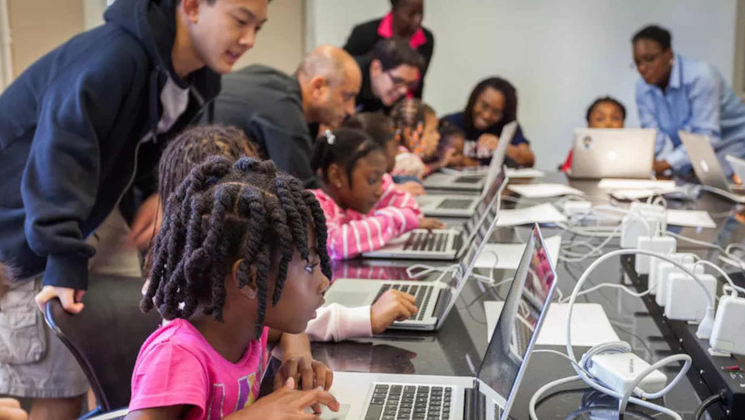
In today’s rapidly evolving world, where technology plays a pivotal role, the importance of equipping children with the necessary skills cannot be overstated. Learning programs designed for kids have emerged as powerful tools that foster their development and prepare them for the challenges ahead. Joining a coding bootcamp for kids is one of the ways your kid can start the programming journey.
From developing critical thinking and problem-solving abilities to nurturing creativity and enhancing communication skills, these programs provide a wealth of advantages that can shape a child’s future in remarkable ways.
Developing Critical Thinking and Problem-Solving Skills:
Learning programs for kids stimulate critical thinking and problem-solving skills from an early age. These programs encourage youngsters to analyze, evaluate, and make wise decisions by giving them riddles, logical thinking tests, and interactive challenges.
Children that participate in these activities gain the ability to think critically, investigate many viewpoints, and devise solutions to problems. Programming games for kids is a fun way to enhance critical thinking. These fundamental abilities establish a solid basis for lifetime academic achievement, career advancement, and wise decision-making.
Improving Creativity and Imagination:
Creativity is a vital asset in today’s society when innovation and unconventional thinking drive growth. Learning programs encourage children’s creativity by giving them the chance to express themselves and use their imaginations.
Children are inspired to think creatively, explore their ideas, and bring them to life through interactive games, art projects, and narrative exercises. These programs encourage creativity, enabling kids to look at problems from a different angle and come up with original answers that go beyond preconceived notions.
Enhancing Communication Skills:
Success in life may be achieved in all areas by having practical communication skills. Learning programs for children strongly emphasize improving communication skills by giving them venues for expression and teamwork.
These programs enable kids to express their ideas, listen intently, and communicate with their peers, whether through interactive storytelling, online debates, or group projects. Children who practice communication skills gain self-assurance, empathy, and the capacity to express themselves clearly. This key talent will benefit them in their studies, interpersonal interactions, and future employment.
Promoting technology literacy:
In the current digital age, being technologically literate is essential for surviving in today’s society. Children are exposed to a variety of technologies, tools, and digital platforms through learning programs for kids, which helps them feel at ease with technology from an early age.
They gain confidence and adaptability while utilizing new technologies because of this familiarity, which also provides them with crucial technical abilities. Children who are technologically literate are better able to prosper in a culture that values technology by being prepared for the digital environment they will face throughout their schooling and professions.
Cultivating Independence and Self-Learning:
Learning programs give kids the tools they need to learn for themselves, encouraging independence and a desire for knowledge. Children can study topics that interest them and advance at their own pace thanks to the interactive interfaces, adaptive learning strategies, and personalised feedback that are frequently found in these programmes.
Learning programs foster a sense of curiosity and a lifetime love of learning by encouraging self-directed study. Children develop the abilities needed to independently seek out information, adjust to new situations, and take responsibility for their education—a crucial quality that can result in long-term success.
Types of Learning Programs for Kids
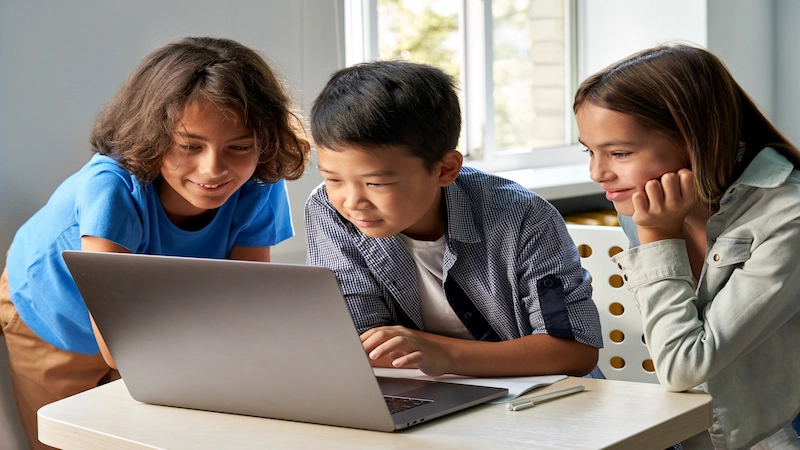
In today’s fast-paced world, it is crucial to equip children with skills that will help them thrive in the future. Traditional education alone may not be sufficient to prepare them for the challenges ahead.
That’s where specialized learning programs come into play, offering children the opportunity to explore cutting-edge technologies like coding, robotics, artificial intelligence (AI), and virtual reality (VR). In this blog, we will delve into these exciting learning programs and highlight their benefits for young minds.
Coding:
In the digital age, knowing how to code has become essential. Children that learn to code develop their critical thinking, inventiveness, and ability to solve problems. Numerous coding courses are offered, ranging from beginner-friendly block-based coding to more complex programming languages for older children.
Children who learn to code can design their own websites, animations, and games while building a strong basis for computational thinking.
Robotics:
Robotics is a multidisciplinary field that combines science, engineering, and programming. It introduces kids to the world of automation and clever technologies. Kids may build and program robots through robotics programs, which teach children important skills like mechanical engineering, electronics, and logical reasoning.
Children who interact with robots learn to think critically, collaborate effectively, and persevere as they overcome obstacles and investigate real-world applications.
Artificial Intelligence (AI):
AI is transforming various aspects of our lives, and introducing kids to AI early on can unlock their potential in this rapidly evolving field. AI programs for kids focus on teaching the fundamentals of machine learning, natural language processing, and computer vision. it’s important to learn all the computers basics for kids to get a good grasp.
By experimenting with AI technologies, children develop skills in data analysis, algorithmic thinking, and problem-solving. These programs often involve creating AI models, designing chatbots, or exploring computer vision applications.
Virtual Reality (VR):
Virtual Reality creates an immersive simulated environment that allows children to explore and interact with virtual worlds. Children can go on virtual field trips, historical quests, or scientific discoveries with the help of VR-based learning programs, which offer a distinctive educational experience.
Children can learn difficult ideas in a fun and participatory way with virtual reality. As they interact with virtual settings that spark their imagination, they enhance their spatial awareness, empathy, and narrative abilities.
Popular Learning Programs for Kids in 2023
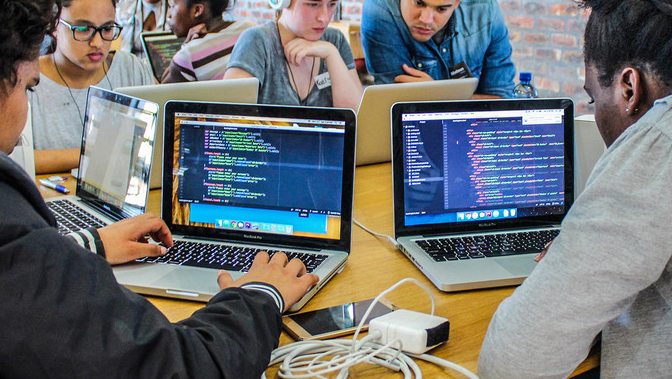
In the digital age, educational tools and platforms have revolutionized the way children learn and engage with subjects. Learning programs designed specifically for kids have gained immense popularity, offering interactive and enjoyable experiences that foster creativity, problem-solving skills, and critical thinking.
In this blog, we will explore some of the most popular learning programs for kids in 2023, highlighting their features, benefits, and the skills they help develop.
BrightCHAMPS:
CodeChamps by BrightChamps is an extraordinary platform that ignites young minds with the power of coding. It is a creative wonderland where kids dive into the captivating world of programming, learning to unravel complex algorithms and craft their own digital masterpieces.
With a holistic curriculum, CodeChamps nurtures the innate problem-solving abilities of children, fostering their creativity and critical thinking. CodeChamps is where dreams come alive, and the future of innovation takes flight.
Scratch:
Scratch, developed by the MIT Media Lab, has been a favorite among young learners for several years. Children may use this visual programming language to make interactive stories, animations, and games.
Kids may combine vibrant code blocks using a drag-and-drop interface to create their own projects. Scratch coding for kids has the ability which gives the kids the opportunity to collaborate, think creatively, and share their works with others in the Scratch community.
Minecraft Education Edition:
Minecraft Education Edition is an educational version of the immensely popular sandbox game. It offers a distinctive learning setting where kids may explore, create, and work together to solve issues.
History, math, and science are just a few of the areas covered by the lessons and activities in the Minecraft Education Edition. Students improve their critical thinking, spatial reasoning, and collaborative abilities by creating virtual worlds.
Khan Academy Kids:
Khan Academy Kids is a thorough teaching platform created for preschoolers and early primary students. It provides interactive exercises, games, and movies on a variety of topics, including reading, math, social-emotional growth, and more.
Children can study at their own pace thanks to the adaptive nature of the program, which also offers customized feedback and suggestions. By encouraging a love of studying, Khan Academy Kids creates a strong foundation for future academic achievement.
Kodable:
Kodable is a programming curriculum created especially for kids. Through a selection of interesting games and puzzles, the basics of coding are introduced. While directing charming characters through numerous mazes, children learn programming principles like sequencing, loops, and conditionals.
As students advance, Kodable helps them develop computational thinking, problem-solving skills, and logical reasoning, preparing them for more complex coding languages.
Duolingo:
For people of all ages, including kids, Duolingo has emerged as a well-liked language-learning resource. Duolingo makes learning languages enjoyable and participatory with its gamified methodology.
Children can select from a number of languages and take part in bite-sized sessions that incorporate speaking, listening, reading, and writing exercises. A strong foundation in vocabulary, grammar, and cultural awareness is provided by Duolingo.
Tynker:
Tynker is a different website where young students can learn about coding and computational thinking. Kids can design their own interactive projects, games, and animations using the visual programming interface that is provided.
To keep kids motivated and interested, Tynker offers step-by-step instruction, coding challenges, and even coding tournaments. Children learn problem-solving, reasoning, and algorithmic thinking through Tynker, setting the foundation for future STEM endeavors.
Learning Programs for Kids: Challenges and Opportunities

In today’s digital age, learning programs have become an integral part of education, offering interactive and engaging ways to teach children. These programs have the potential to enhance children’s learning experiences, making education more enjoyable and effective.
However, like any teaching method, there are certain challenges that educators and parents may encounter when utilizing learning programs for kids. In this blog post, we will explore some of the common challenges faced in teaching children through learning programs and discuss possible solutions to overcome them.
1. Limited Personal Interaction:
One of the primary challenges in teaching kids through learning programs is the limited personal interaction they provide. Unlike traditional classrooms where students can directly interact with teachers and peers, learning programs often rely on pre-recorded lessons or automated responses. This lack of personal interaction can hinder children’s ability to seek clarifications, ask questions, and receive immediate feedback.
Solution: To address this challenge, it is crucial to complement learning programs with opportunities for real-time interaction. Teachers can conduct live video sessions, virtual classrooms, or discussion forums where children can actively participate and engage with their peers and educators. This enables personalized support and fosters a sense of community, making the learning experience more interactive and collaborative.
2. Limited Hands-on Experience:
Many learning programs primarily focus on theoretical knowledge, often lacking hands-on experiences that are essential for children’s comprehensive learning. The practical application of concepts through experiments, projects, or activities is crucial for better understanding and retention. Without such experiences, children may struggle to grasp complex concepts or find it challenging to apply what they have learned in real-world scenarios.
Solution: Learning programs should incorporate hands-on activities that allow children to apply their knowledge in practical ways. This can be achieved by including interactive simulations, virtual experiments, or providing materials for offline experiments or projects. By combining theoretical lessons with practical experiences, children can develop a deeper understanding of the subject matter and enhance their critical thinking and problem-solving skills.
3. Individual Learning Pace and Adaptability:
Each child has a unique learning style and pace. Traditional classrooms often allow teachers to adapt their teaching methods based on individual needs, but learning programs may lack the flexibility to cater to these variations. Some children may require additional time to grasp certain concepts, while others might progress more quickly. In a standardized learning program, individual differences may be overlooked, leading to disengagement or frustration among students.
Solution: Learning programs should incorporate adaptive learning techniques that can assess each child’s progress and adjust the content and pace accordingly. By utilizing data-driven algorithms and artificial intelligence, learning programs can personalize the learning experience, providing targeted content and resources based on individual strengths, weaknesses, and learning preferences. This adaptive approach helps to keep children motivated and engaged while accommodating their unique learning needs.
4. Limited Motivation and Engagement:
Maintaining children’s motivation and engagement can be a challenge when using learning programs. The absence of immediate rewards, social interaction, and the physical presence of teachers and peers can make the learning experience less stimulating and may lead to reduced motivation or disinterest. Incorporating interactive elements, gamified features, and opportunities for collaboration can help address this issue. Moreover, integrating mindfulness activities for kids into the learning process can promote focus, emotional well-being, and a sense of connection, ultimately enhancing their overall engagement and making the learning journey more fulfilling.
Solution: To overcome this challenge, learning programs should incorporate gamification elements such as rewards, badges, progress tracking, and interactive quizzes. By creating a sense of achievement and competition, children are motivated to actively participate and progress through the learning program. Additionally, integrating collaborative activities, group projects, and online communities can foster a sense of belonging and social interaction, further enhancing engagement.
Opportunities for kids gained through learning programs

While gaining knowledge and acquiring skills is crucial, it is equally important for kids to have opportunities to apply what they have learned in real-life scenarios. By giving children practical experiences to showcase their abilities, we empower them to become confident, capable individuals who can contribute meaningfully to society.
In this blog, we will explore the various opportunities available for kids to apply their skills and knowledge gained through learning programs, fostering their growth and preparing them for the future.
1. Project-Based Learning
Project-based learning is a powerful approach that enables children to put their knowledge into practice by engaging in hands-on projects. Project-based learning enables children to apply what they have learned in a variety of areas, whether they are building a model, performing scientific experiments, producing artwork, or establishing a website. For instance, robotics projects for kids provide an excellent opportunity for them to integrate their learning in science, technology, engineering, and mathematics (STEM) fields.
It fosters creativity, teamwork, problem-solving, and critical thinking while giving newly acquired knowledge a useful context.
2. Challenges and Competitions
Children have the opportunity to display their abilities and talents by taking part in contests and challenges. Whether it’s a science fair, robotics competition, spelling bee, or coding challenge, these occasions provide children a chance to put what they’ve learned into practice in a fun and competitive setting.
Competitions foster a healthy feeling of rivalry, inspire kids to succeed, and boost their self-assurance. They also promote tenacity, toughness, and the will to get better all the time.
3. Volunteering and community service
Children who participate in volunteer and community service projects have a great chance to put their knowledge and abilities to use in a way that benefits society. These activities give children the chance to actively and meaningfully contribute to their communities, whether it be by taking part in environmental projects, volunteering at a nearby shelter, coaching younger pupils, or planning fundraising activities. Encouraging discussions and questions for kids about their experiences can further deepen their understanding of the impact they’re making and inspire a lifelong commitment to making a positive difference.
Children gain empathy, social awareness, and a sense of responsibility by using what they have learned to address real-world situations.
4. Mentoring and Teaching Others
In addition to enhancing their own learning, encouraging children to become mentors and teachers also gives them the confidence to teach others. Children can increase their comprehension of a subject while improving their communication and leadership abilities by coaching a classmate, instructing a younger sibling, or leading a study group.
Kids gain a sense of success and solidify their own knowledge by helping others on their learning path.
5. Entrepreneurial Ventures
The ability to innovate and start businesses is essential for the future. Kids who are encouraged to use their knowledge and skills in entrepreneurial endeavors get a first-hand look at the ideation, planning, execution, and problem-solving processes. Moreover, fostering a habit of reading for kids can further enrich their entrepreneurial journey by exposing them to diverse ideas and perspectives.
Children gain a realistic awareness of opportunities and obstacles in the real world through entrepreneurial endeavors, whether they involve starting a small business, developing and selling items, or planning a charity event. These opportunities help people become more imaginative, resilient, and self-aware.
Conclusion
One of the most valuable skills children can acquire is proficiency in learning programs. These programs not only provide a solid foundation in technology but also foster creativity, critical thinking, problem-solving, and collaboration skills. As we conclude our exploration of the importance of learning programs for kids in 2023, let’s summarize the main points and emphasize their significance.
First and foremost, learning programs expose children to the world of technology from an early age. In today’s digital era, technology has become an integral part of our lives, permeating various industries and sectors.
By engaging with learning programs, children gain familiarity and confidence in navigating digital platforms, applications, and tools. This knowledge is fundamental for their future success, as most careers now require at least a basic understanding of technology.
Another crucial aspect of learning programs is their ability to foster collaboration and teamwork. Many of these programs offer opportunities for children to work together, either in-person or virtually, on projects and challenges.
Collaborative experiences promote effective communication, empathy, and the ability to work harmoniously in diverse teams. These skills are essential for success in the modern workplace, where collaboration across disciplines and cultures is increasingly common.
In conclusion, learning programs for kids in 2023 hold immense importance in shaping the future generation. They provide children with the necessary technological literacy, nurture their creativity and critical thinking, promote collaboration and teamwork, foster resilience and a growth mindset, and prepare them for the demands of the future.
Frequently Asked Questions
Popular learning programs for kids include ABCmouse, Khan Academy Kids, and Scratch.
When choosing a learning program for your child, consider their interests, learning style, and educational goals. Read reviews and compare features to find the best fit.
Enrolling your child in a learning program can enhance their academic skills, promote critical thinking, foster creativity, and boost self-confidence.
The suitable age to start a learning program varies, but many programs are designed for children as young as two years old.
The cost of learning programs for kids can vary widely, ranging from free options to monthly subscriptions or one-time fees. Prices can range from $0 to $30 per month on average.
Yes, there are free and low-cost learning programs available for kids. Websites like Khan Academy, Code.org, and PBS Kids offer free educational resources.
Learning programs for kids typically cover a range of subjects, including math, reading, science, language arts, social studies, and coding.
Many learning programs offer adaptive features that can be tailored to a child’s individual needs, allowing personalized learning experiences.
The recommended time for a child to spend on a learning program can vary, but generally, 30 minutes to one hour per day is a good starting point.
Learning programs often provide progress-tracking tools for parents. These may include performance reports, assessments, or dashboards to monitor your child’s progress.
Yes, many learning programs for kids are available online, allowing access from anywhere with an internet connection.

 We are an army of educators and passionate learners from BrightChamps family, committed to providing free learning resources to kids, parents & students.
We are an army of educators and passionate learners from BrightChamps family, committed to providing free learning resources to kids, parents & students.











